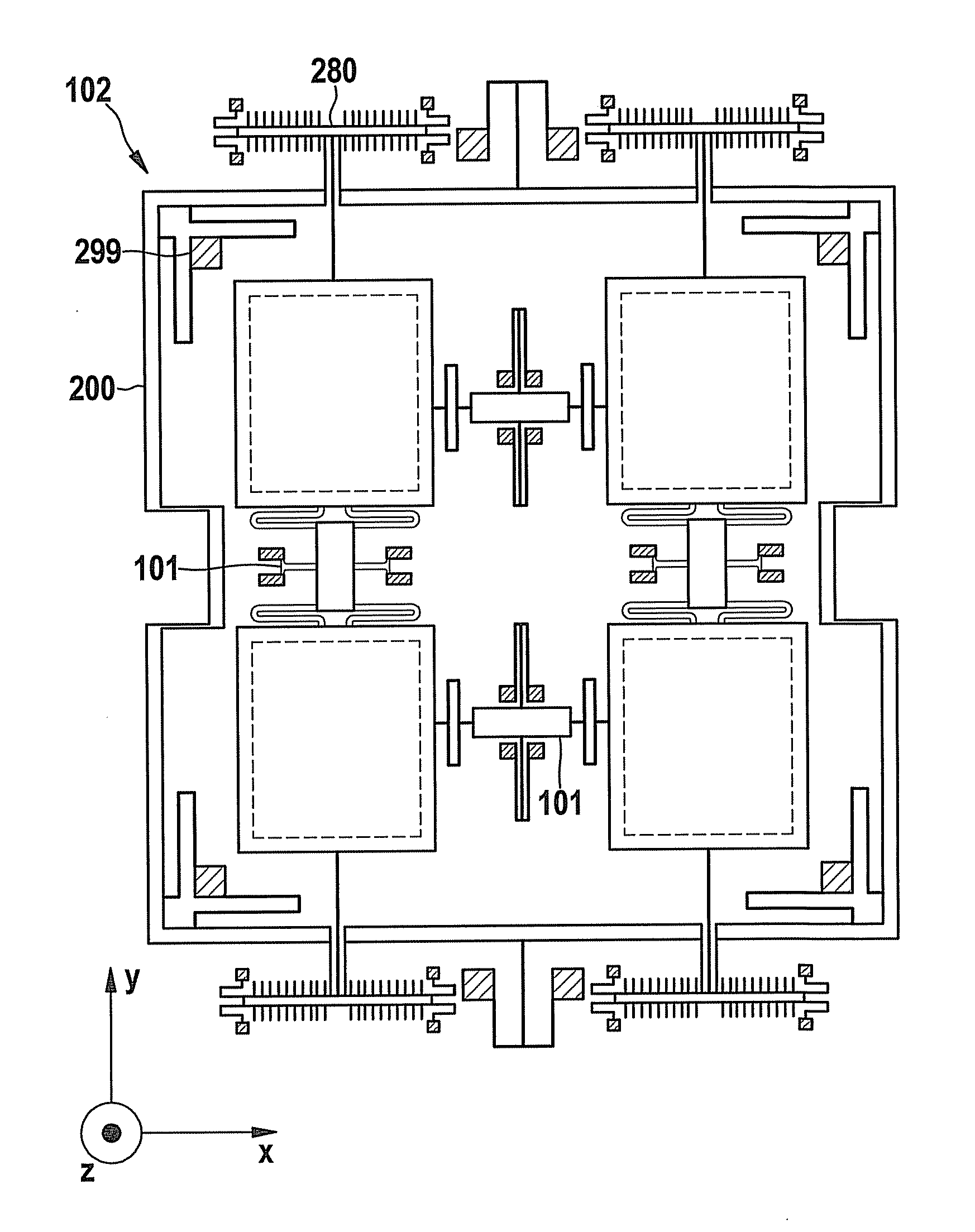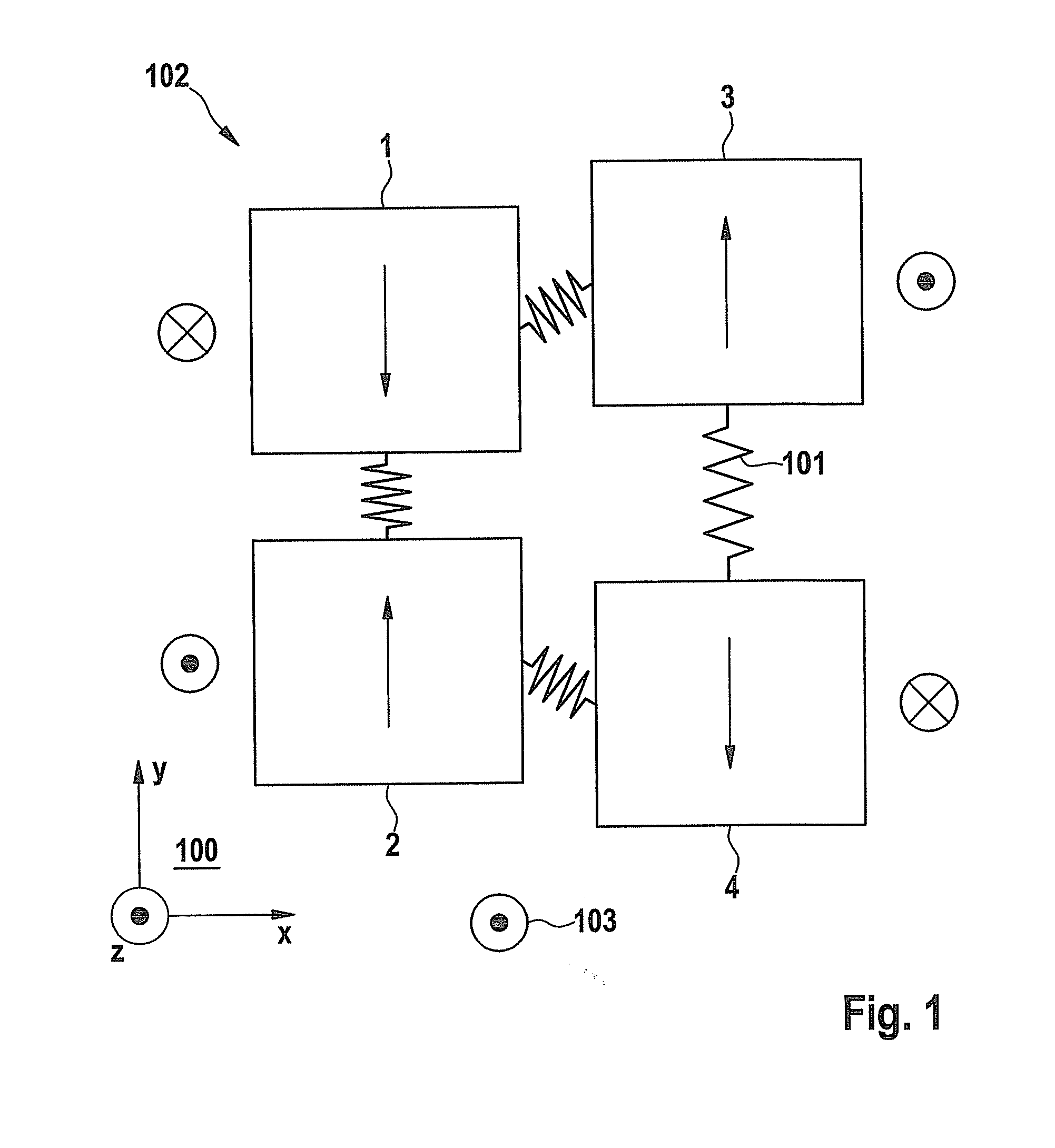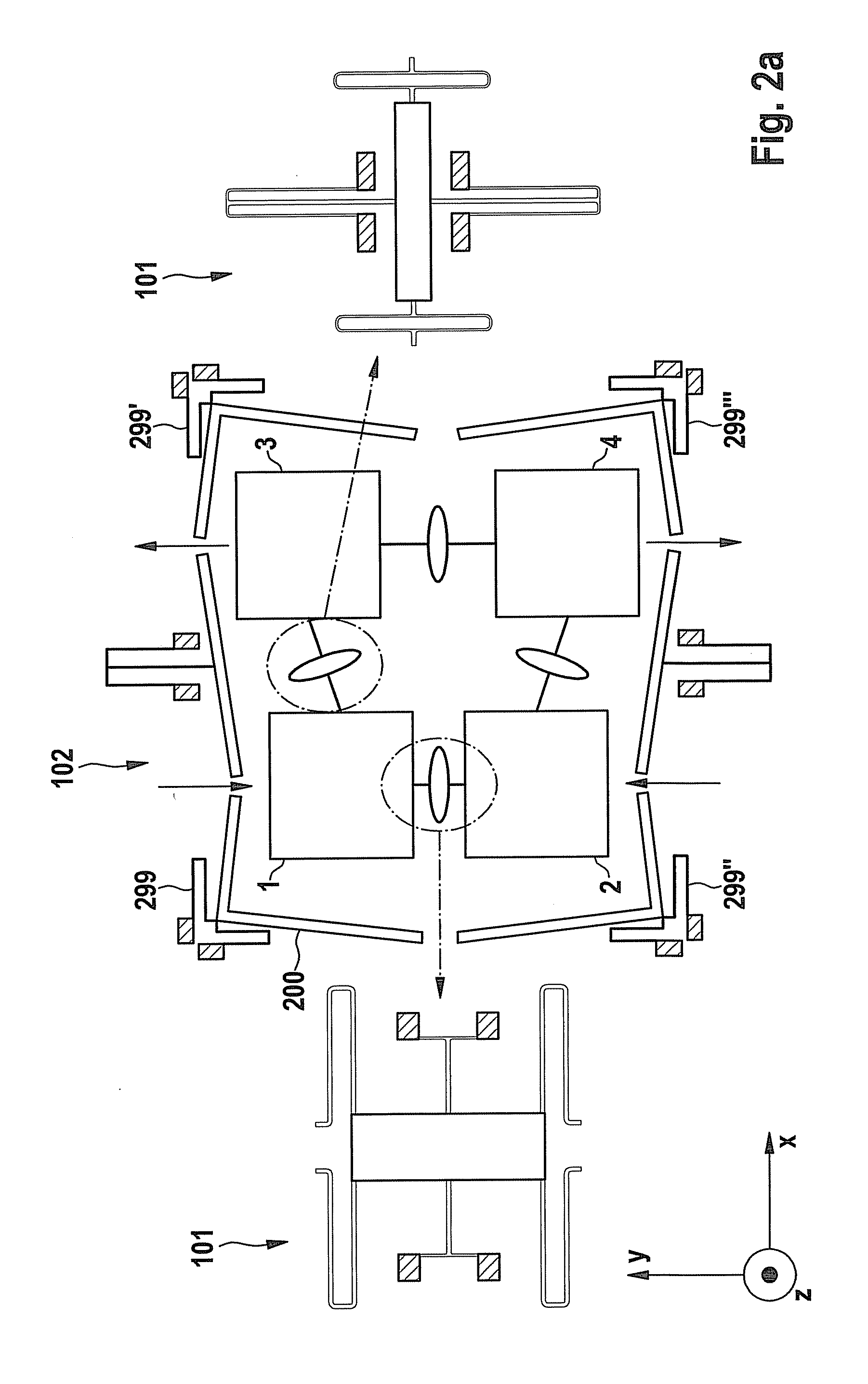Yaw-rate sensor and method for operating a yaw-rate sensor
a sensor and yaw-rate technology, applied in the direction of acceleration measurement using interia forces, turn-sensitive devices, instruments, etc., can solve the problems of error signals during operation, inability to distinguish between coriolis force and force, and limitation is extremely disadvantageous, so as to achieve higher deflection
- Summary
- Abstract
- Description
- Claims
- Application Information
AI Technical Summary
Benefits of technology
Problems solved by technology
Method used
Image
Examples
Embodiment Construction
[0023]In the figures, identical parts are provided with identical reference numerals and are therefore normally named or mentioned only once.
[0024]FIG. 1 shows a schematic illustration of an exemplary specific embodiment of yaw-rate sensor 102 according to the present invention. Yaw-rate sensor 102 has four Coriolis elements 1, 2, 3, 4, which are designed as linearly oscillating masses (also referred to hereinafter as partial oscillators or partial structures). A substrate (not illustrated) has a main plane of extension 100. Second axis (drive axis) Y is in main plane of extension 100. Drive means (not illustrated), which are preferably designed as comb structures, are provided for capacitively inducing oscillation of the Coriolis elements parallel to the second axis. Coriolis elements 1, 2, 3, 4 are connected to each other via coupling elements 101, which are preferably designed as rockers. The movements of the partial oscillators in the operation mode are indicated by the arrows. ...
PUM
 Login to View More
Login to View More Abstract
Description
Claims
Application Information
 Login to View More
Login to View More - R&D
- Intellectual Property
- Life Sciences
- Materials
- Tech Scout
- Unparalleled Data Quality
- Higher Quality Content
- 60% Fewer Hallucinations
Browse by: Latest US Patents, China's latest patents, Technical Efficacy Thesaurus, Application Domain, Technology Topic, Popular Technical Reports.
© 2025 PatSnap. All rights reserved.Legal|Privacy policy|Modern Slavery Act Transparency Statement|Sitemap|About US| Contact US: help@patsnap.com



